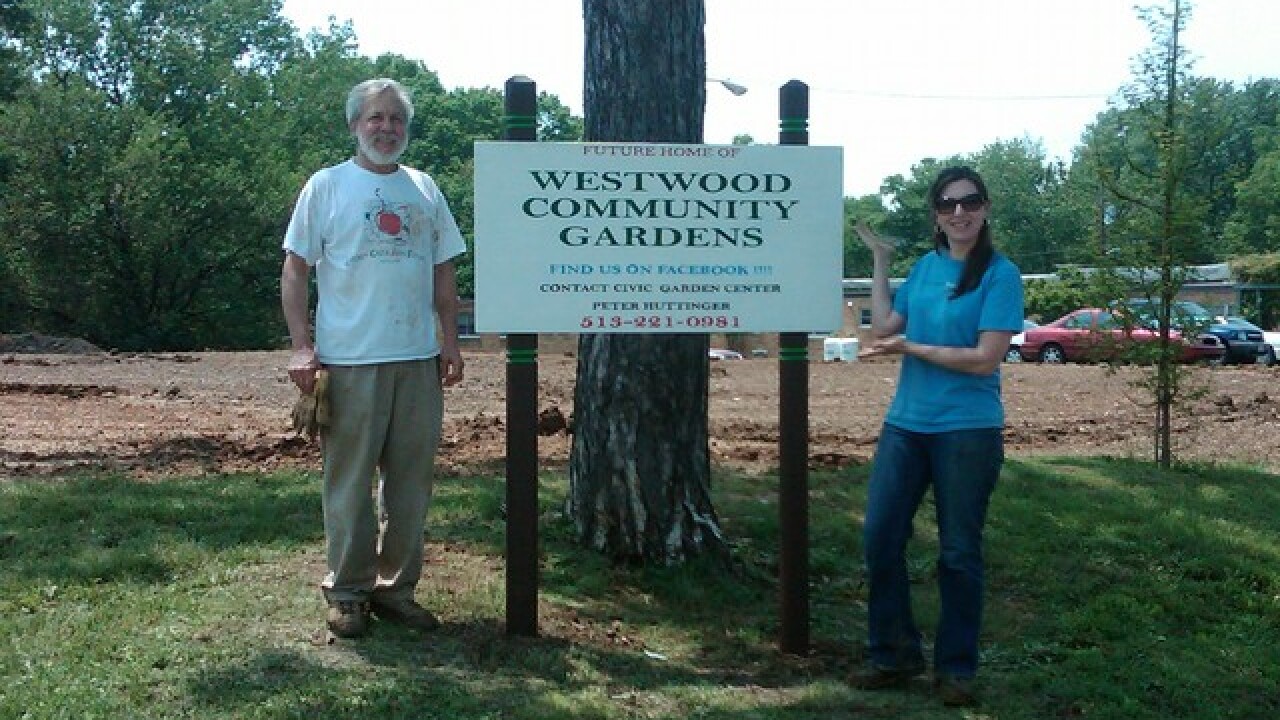CINCINNATI -- Community gardeners around the city are anticipating more than just May flowers from the recent rainfall.
Members of more than 80 Tri-State gardens are growing as neighbors while they plant seeds in their neighborhoods.
"It's kind of building community," said Joel Kimmet, site manager for Westwood Community Gardens.
Gardeners meet their neighbors among the raised-bed plots, and it's not unusual for residents from a nearby retirement community to drop by to admire the garden.
"When you're working in the garden, you know, people are just happy," Kimmet said.

Westwood Community Gardens is one of 57 included in the Civic Garden Center's Community Garden Network.
Westwood Community Gardens is part of the Civic Garden Center of Greater Cincinnati's Community Garden Network. Founded in 1942, the Civic Garden Center is a nonprofit designed to build community through gardening and education.
The center began its community garden program in 1980 with the Over-the-Rhine People's Garden.
Of the community gardens scattered around Greater Cincinnati, 57 are part of the Community Garden Network. That number fluctuates from year to year as new gardens join the network and others fall away.
"They kind of ebb and flow just a little bit," said Greg Potter, gardens coordinator for the Civic Garden Center.
To be included in the network, community gardens must display a Civic Garden Center sign, further the center's mission and follow organic practices. At least one member of the garden also must go through the center's community gardens development training.
Beyond meeting the network requirements, the gardens are as varied as the communities in which they're located.
"We don't have any kind of mold that we kind of instruct people into kind of building a community garden around," Potter said. "We work with them to figure out exactly what shape that looks like for that community."
Some, like Westwood Community Gardens, are geared toward people who don't have their own space to grow produce.
"Probably 90 percent of what we produce goes to the gardeners' families," Kimmet said.
For $25, gardeners can rent a raised-bed plot or a 20-foot section of a farm row.
Other gardens are designed to benefit people in need within the community. The Julie Hanser Community Garden in Walnut Hills is what's known as a pantry garden.
"Basically, most of what we grow, we harvest it and we take it to the food pantry," said Sue Plummer, who manages the Julie Hanser Community Garden.
The Franciscan Ministries Community Garden takes a blended approach to assist multiple groups within the community. The garden is largely geared toward immigrants and refugees from Bhutan and Nepal. Although some do rent plots just to have a place to grow produce, many gardeners donate some of their crops to local nonprofits.
"We encourage people to donate from their own plot," said Marci Peebles, program director for Franciscan Ministries.
Even at the community gardens in which gardeners keep their crops, there's often some element of outreach. Westwood Community Gardens gives several hundred pounds of produce every year to the community development organization My Neighbor's Place, Kimmet said.
Community gardens do come with their challenges. Getting them up and running can cost money, time and effort. Once established, they sometimes become targets for theft or vandalism. Getting buy-in from community members can prove challenging, too.
"You have to coalesce a group of people toward a goal," Potter said. "That's always work."
In the neighborhoods where that buy-in has been achieved, the benefits extend beyond simply providing sustenance for people.
"I feel like there's a very strong sense of empowerment from growing your own food," Potter said.
Not only is that food fresh, but it's grown without the chemicals used on much of the produce in grocery stores.
"We do things as naturally as we can," Plummer said.
Community gardens also can offer exposure to people of different cultures and backgrounds.
"It's not forced," Peebles said. "If someone just wants to kind of do their dirt and do their veggies, they can, but there are opportunities."
Most community gardens are already kicking off the planting season and will remain active until about November. Applications and plot rental deadlines vary by community garden but typically fall between November and February.
CLICK HERE TO FIND A COMMUNITY GARDEN NEAR YOU
For those who want fresh, local produce but aren't inclined toward gardening, Cincinnati also has more than 30 community-supported agriculture gardens and farms. For a fee, customers receive a set amount of produce at weekly or monthly intervals.
For more information on community-supported agriculture locations and sign-ups, visit Local Harvest online.



